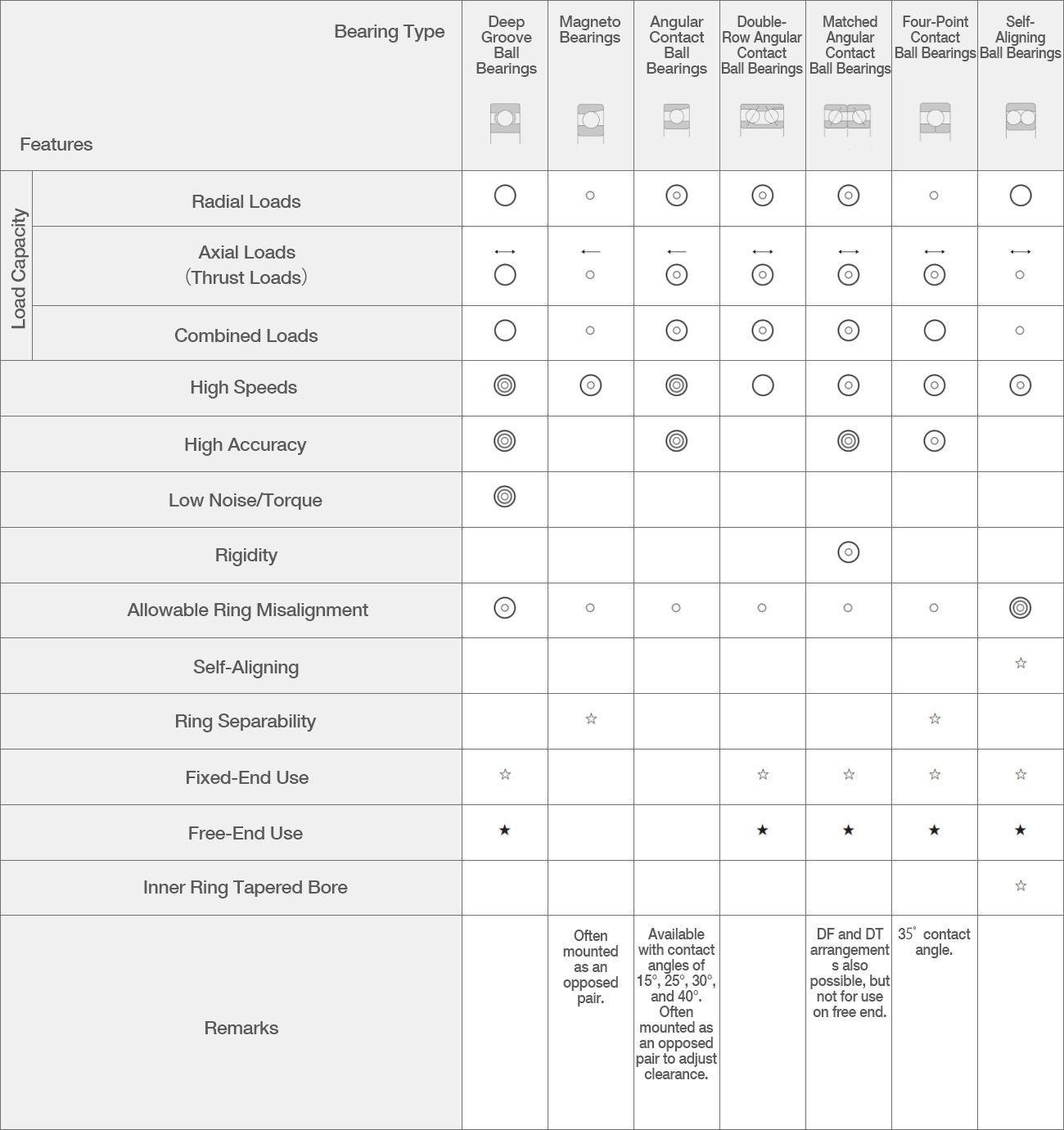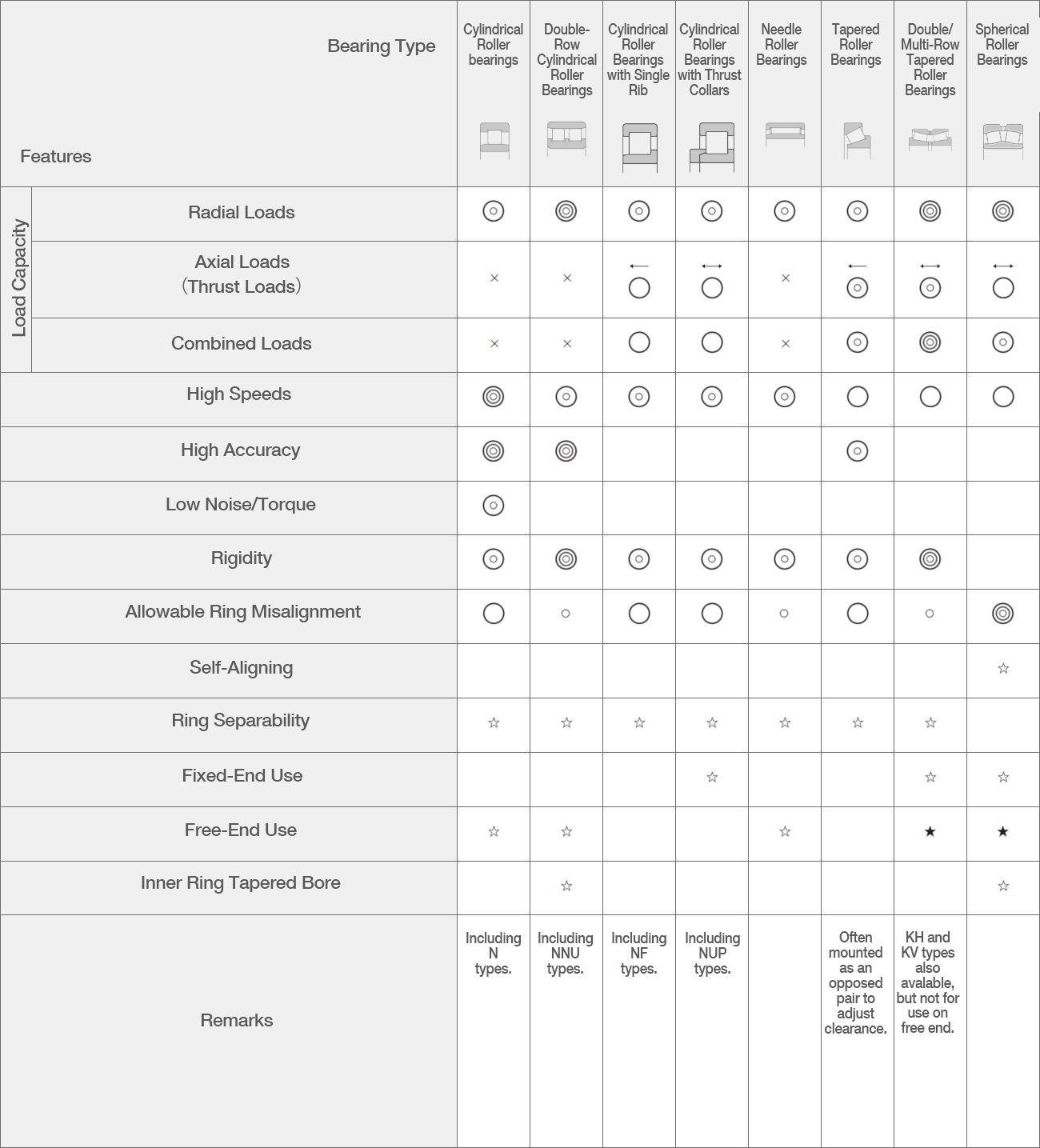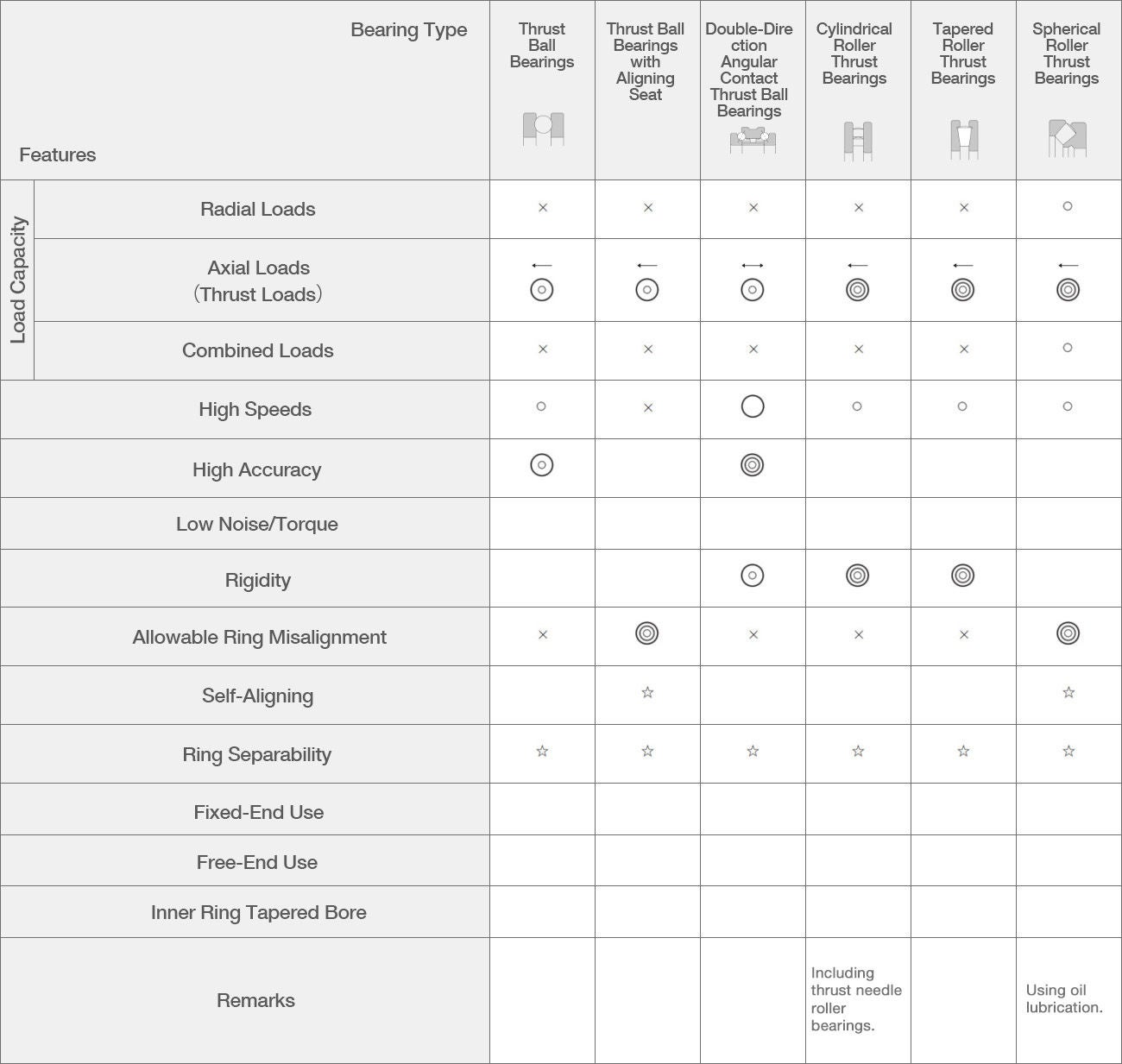2—Rolling Bearing Types and Characteristics
In rolling bearings, the balls or rollers held between the raceway rings rotate to support the load. Different types offer different load capacities and support low or high rotational speeds.
| Rolling Element | |||
|---|---|---|---|
| Balls | Rollers | ||
| Characteristics | Lower load capacity, good for high speeds | Higher load capacity, good for low speeds | |
| Load | Mainly radial loads (loads perpendicular to the shaft) | Radial ball bearings | Radial roller bearings |
| Mainly axial (thrust) loads (loads in the same direction as the shaft) | Thrust Ball Bearings | Thrust roller bearings | |
Radial Ball Bearings: Types and Characteristics
Radial ball bearings, often just called "ball bearings”, are the most common type of bearing.
Table Key:
¥: Excellent, ◎: Good, 〇: Fair, ৹: Conditional, ×: Unsuitable, ←: One direction only, ↔: Both directions
☆: Applicable, ★: Applicable, but allow for shaft expansion/contraction at fitting surfaces

Radial Roller Bearings: Types and Characteristics
Radial roller bearings, often just called “roller bearings”, feature a variety of roller shapes that make them better suited to heavy loads than ball bearings.
Table Key:
¥: Excellent, ◎: Good, 〇: Fair, ৹: Conditional, ×: Unsuitable, ←: One direction only, ↔: Both directions
☆: Applicable, ★: Applicable, but allow for shaft expansion/contraction at fitting surfaces

Thrust Ball Bearings: Types and Characteristics
Thrust bearings can feature balls or rollers and are well-suited to axial (thrust) loads.
Table Key:
¥: Excellent, ◎: Good, 〇: Fair, ৹: Conditional, ×: Unsuitable, ←: One direction only, ↔: Both directions
☆: Applicable, ★: Applicable, but allow for shaft expansion/contraction at fitting surfaces

